Benign breast tumors
 Benign breast tumors in women are diagnosed often enough.Their formation is associated with the division of one or another type of cells, in which the body can not cope with the control of this process.Neoplasms of a benign character are characterized by a slow rate of growth in the absence of metastasis in nearby tissues.Treatment can be conservative and surgical, with such tumors rarely recur.
Benign breast tumors in women are diagnosed often enough.Their formation is associated with the division of one or another type of cells, in which the body can not cope with the control of this process.Neoplasms of a benign character are characterized by a slow rate of growth in the absence of metastasis in nearby tissues.Treatment can be conservative and surgical, with such tumors rarely recur.
WhyDevelop breast tumors
The exact causes of the formation of tumors in the chest are unknown, but you can vydpour a number of predisposing factors that cause the risk of disease increases. These include:
-
 the age group is fifty-five to sixty-five years old;
the age group is fifty-five to sixty-five years old; - presence of chronic diseases of the reproductive system;
- wearing tight and uncomfortable underwear;
- traumatic breast injury, in particular, bruises;
- violation of the ratio of hormones in the body, including with menopause;
- presence of pathologies of the thyroid gland;
- bad habits;
- lack of regular sexual activity;
- frequent stressful effects, depressive conditions;
- diabetes mellitus;
- is overweight;
- exposure to radioactive radiation, ultraviolet light when tanning with naked breasts in the solarium and on the beach;
- harmful working conditions;
- abortions;
- genetic predisposition.
Important ! Numerous studies show that the risk of developing breast cancer is several times higher in nulliparous women, as well as in female representatives who have given birth to only one child.
Types of benign breast tumors
Among the benign tumors that form in the breast tissue, the following types are distinguished:
-
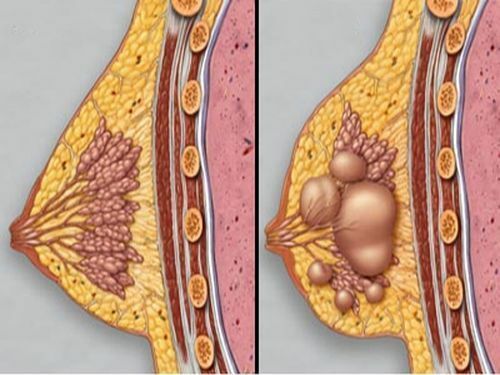 mastopathy;
mastopathy; - fibroadenoma;
- cyst;
- intraprostatic papilloma;
- lipoma.
Treatment of benign breast tumors can be both conservative and operative and it is selected individually after a comprehensive examination of the patient.
The main signs and types of mastopathy
We recommend to read: 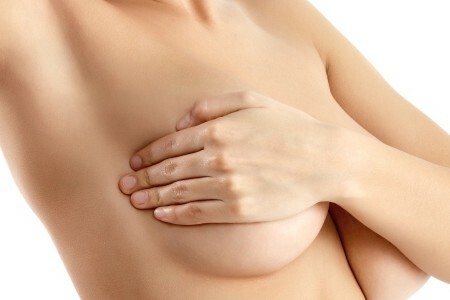 The medical term "mastopathy" includes several tens of benign tumors.Most of them are characterized by a similar clinical picture and occur mainly in women of reproductive age due to endocrine disorders.
The medical term "mastopathy" includes several tens of benign tumors.Most of them are characterized by a similar clinical picture and occur mainly in women of reproductive age due to endocrine disorders.
According to statistics, mastopathy is found in about one in seven women over thirty.Some forms of the disease are dangerous because they are able to degenerate into malignant tumors.The highest risk of malignancy is observed in fibrocystic forms of mastopathy and is about 40% of cases.
The classification of the pathology includes the following types of tumors depending on the nature of the lesion with the predominance of one or another component:
- nodal mastopathy( cyst, fibroadenoma, intraprostatic papillomas, angiomas, etc.) - characterized by the presence in the breast tissue of a single nodalSeals;
- diffuse mastopathy( adenosis, fibrosis, fibro-adenomatosis, polycystosis, etc.) - in the mammary gland multiple seals are formed;
- fibrocystic mastopathy is one of the forms of diffuse mastopathy, manifested by the formation of cysts, intraprostatic papillomas, fibroadenomas.
The development of the disease affects the state of the hormonal background of a woman.One of the risk factors is breastfeeding and the accompanying hormonal changes.Also, the frequent causes of mastopathy include excess prolactin in the blood, dysfunction of the hypothalamus, pituitary gland and thyroid gland.
Symptomatic of mastopathy in the early stages is practically absent.Most women can not suspect ailment, since many before the onset of menstruation there is a characteristic soreness of the breast.At later stages of the development of pathology in the mammary gland, one can grope for seizures, often discharge from the nipples.The tactics of treating mastopathy are selected individually depending on the form and stage of the disease.
Fibroadenoma
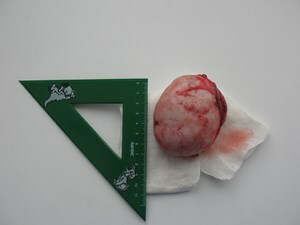 Such benign neoplasms as fibroadenomas are more often detected in female representatives of a young age of up to thirty five years.For such tumors a rather slow rate of growth is characteristic.When palpating, the formation has a rounded shape, moveable.The main risk factors for its occurrence include violations of the ratio of hormones and traumatic lesions of the breast.
Such benign neoplasms as fibroadenomas are more often detected in female representatives of a young age of up to thirty five years.For such tumors a rather slow rate of growth is characteristic.When palpating, the formation has a rounded shape, moveable.The main risk factors for its occurrence include violations of the ratio of hormones and traumatic lesions of the breast.
Fibroadenomas are common and leaf-like.The latter are at high risk of degeneration into malignant neoplasms, therefore surgical treatment should be started immediately after the disease is identified.
Breast cysts
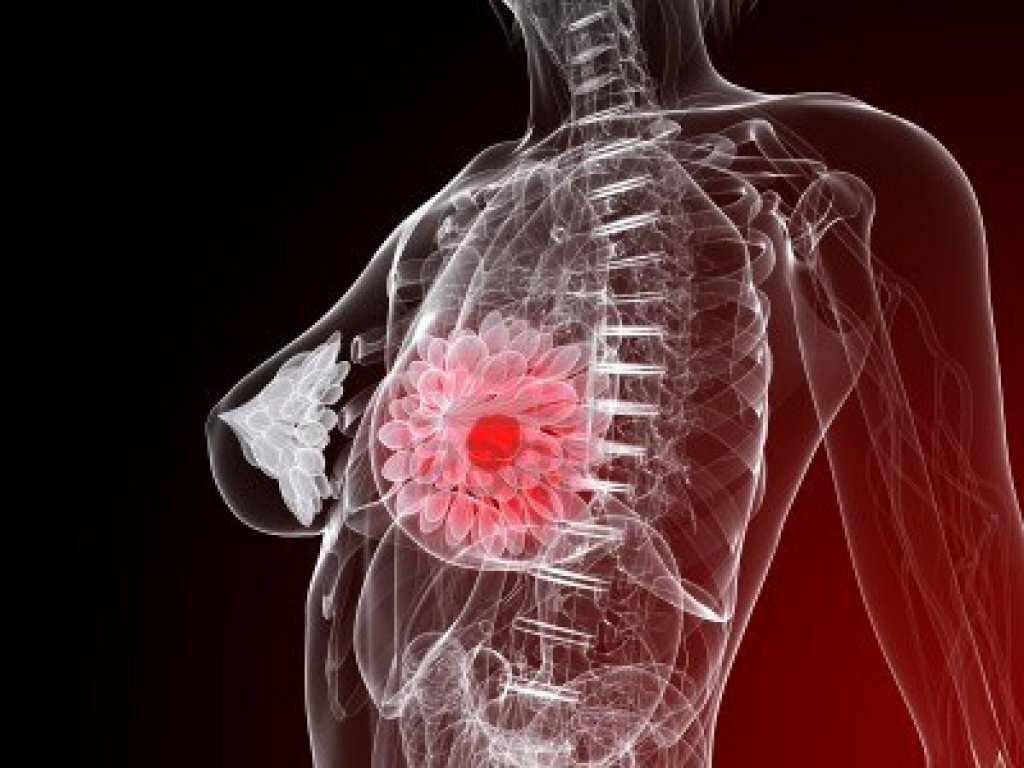 Cysts, like other types of benign formations, arise from endocrine disorders in the female body.Also, their formation is influenced by age-related involutive changes in the structure of glandular tissue and previous inflammatory diseases of the breast.
Cysts, like other types of benign formations, arise from endocrine disorders in the female body.Also, their formation is influenced by age-related involutive changes in the structure of glandular tissue and previous inflammatory diseases of the breast.
Cyst formation occurs when the glandular tissue is replaced with fat.Such processes are characteristic mainly for the climacteric period, when the glandular tissue is almost completely replaced by fatty tissue, which has fibrous-connective septa.
Fat cells in the mammary glands are called adipocytes.They, in addition to their direct appointment, participate in the production of female sex hormones, the most active of which is estradiol.Most of it is synthesized by the ovaries before ovulation, and in the menopause this hormone begins to be missed, which leads to a weakening of the body's immune defense.At the same time, fat cells continue to produce estrogen, an overabundance of which can lead to the development of breast cancer.That's why experts note an increased risk of oncology in women with excessive body weight.
Due to a violation of the normal outflow of secretion from the milk ducts, congestion occurs in the alveoli.With their expansion, cavities with liquid contents are formed - these are cysts that can be either single or multiple.
The disease can be suspected according to the main clinical signs:
- soreness and discomfort in the mammary glands, especially before menstruation;
- change in the shape and volume of the affected breast;
- discoloration of skin;
- violation of the shape of the nipple.
Simple surgical cysts usually do not require.In any case, the treatment is selected only by the doctor after a detailed examination of the patient based on the results of the studies.
Intra-current papilloma of the mammary glands
Intra-flow papillomas refer to nodal mastopathy that can occur in women of any age group due to fluctuations in the hormonal background.
The main symptoms inherent in a variety of benign tumors, such as intraprostatic papillomas:
- discomfort and chest pain,
- appearing when pressed on the nipple, clear or greenish fluid, sometimes with impurities of blood.
In order to diagnose intrapromed papillomas, it is necessary to perform a chest X-ray with contrast( galactography).Treatment of pathology is exclusively surgical.
Breast lipoma in women
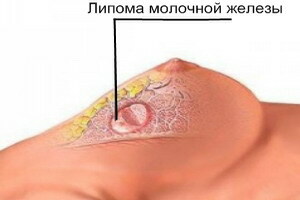 Lipomas of the mammary glands are most common in women after 40 years of age, in which hormonal changes occur.Such a tumor is formed from adipose tissue.To the touch it is soft, painless.The dimensions of the lesion may be different, in some patients the lipomas reach a half centimeter in diameter.
Lipomas of the mammary glands are most common in women after 40 years of age, in which hormonal changes occur.Such a tumor is formed from adipose tissue.To the touch it is soft, painless.The dimensions of the lesion may be different, in some patients the lipomas reach a half centimeter in diameter.
Lipomas do not dissolve on their own, therefore large tumors that cause inconvenience require surgical removal.It is also worth noting that there is a risk of its degeneration into a malignant tumor.
General clinical signs of benign breast tumors
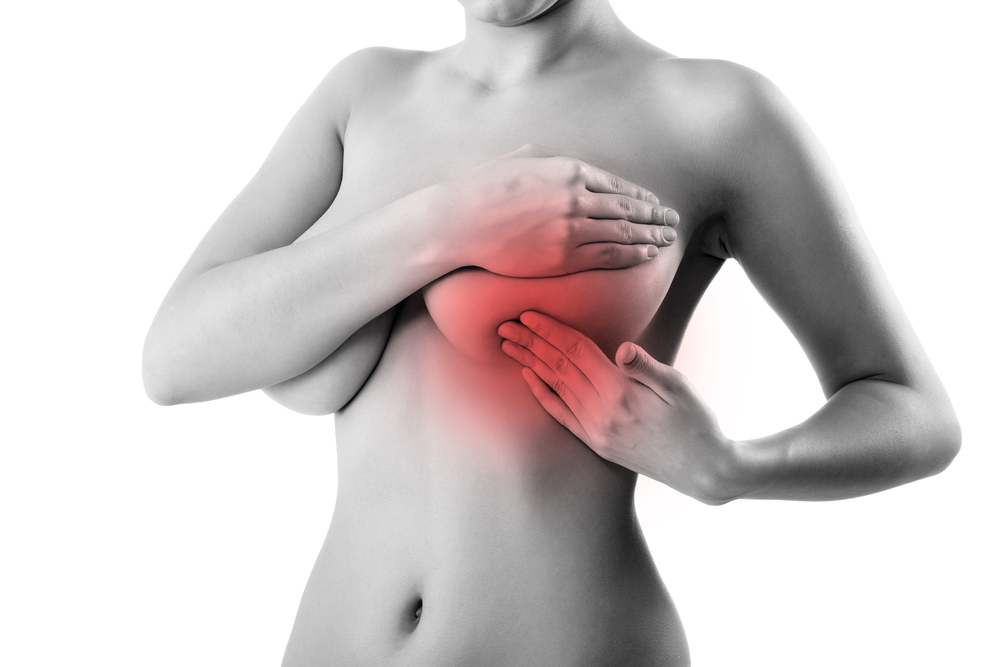 As already mentioned, benign neoplasm often does not manifest itself for a long time, therefore their detection occurs by chance.Many women with self-palpation of the breast show characteristic densities, in rare cases, pain occurs.Also possible pathological discharge from the nipple when squeezing.Such secretions can be transparent, greenish or brownish, bloody or reminiscent of colostrum.
As already mentioned, benign neoplasm often does not manifest itself for a long time, therefore their detection occurs by chance.Many women with self-palpation of the breast show characteristic densities, in rare cases, pain occurs.Also possible pathological discharge from the nipple when squeezing.Such secretions can be transparent, greenish or brownish, bloody or reminiscent of colostrum.
Tumors of large size can change the shape of the breast, causing asymmetry.Since the neoplasm puts pressure on the surrounding tissues and nerve endings, there is a feeling of heaviness, discomfort, and compression.
Please note! Generally, benign tumors in young women are not prone to rapid growth, only 10% of cases show an increase in the size of the neoplasm.
At the first signs of a neoplastic disease of the glands it is strongly recommended to consult a specialist for examination and exclusion of the malignant nature of the pathology.
Diagnosis methods
Diagnosis of benign breast can include the following research package:
- external examination and palpation of the mammary glands;
- mammography;
- X-ray examination with contrast - effective in diagnosing intrapromed papillomas;
- hormonal blood test.Diagnostic value in this study is the determination in the patient's blood of the level of estardiol, hormones of the pituitary and thyroid gland, follicle-stimulating hormone, and also prolactin.In addition, a study is conducted on the cancer markers CA 15-3;
- ultrasonographic examination;
- puncture of neoplasm with subsequent study of the obtained material in laboratory conditions.The procedure is performed using local anesthesia.By results of such research it is possible to precisely differentiate a tumor, which is extremely important for the appointment of optimal treatment tactics.
In some cases, some additional diagnostic tests may be prescribed, for example, ultrasound of the pelvis and ultrasound of the thyroid gland, computerized brain examination, and others.
Treatment of benign breast tumors
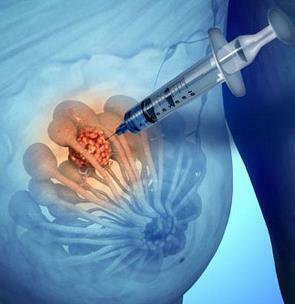 If the breast tumor does not tend to grow rapidly, it does not give the woman a discomfort perhaps conservative treatment, which consists in regular medical observation of the dynamics of its development.Most often, there is no need for medical correction, but a doctor can recommend herbal preparations that positively affect the hormonal balance.Vitamin E and iodine preparations can also be prescribed.
If the breast tumor does not tend to grow rapidly, it does not give the woman a discomfort perhaps conservative treatment, which consists in regular medical observation of the dynamics of its development.Most often, there is no need for medical correction, but a doctor can recommend herbal preparations that positively affect the hormonal balance.Vitamin E and iodine preparations can also be prescribed.
An important aspect in the treatment of benign breast diseases is a lifestyle change.All patients should take measures to normalize weight.Proper rational nutrition will normalize the metabolic processes and functioning of all organs and systems in the body.It is equally important to cure any existing diseases of the genital area.
Radical surgical treatment is prescribed in cases when the neoplasm increases in size, manifests marked pathological symptoms, as well as signs of malingering.
The following methods are used to remove tumors in the mammary gland:
- sectoral resection of the breast, implying the removal of its pathological site along with neoplasm;
- enucleation of the tumor, in which the pathological formation is separated from the remaining tissues and removed, not excluding the areas of the gland itself.
In surgical treatment, histological examination of the neoplasm tissue is mandatory, in order to exclude its malignant nature.After the operation, a cosmetic suture is superimposed, which will subsequently be virtually invisible.
Attention! Surgical treatment of benign breast tumors is highly effective, but it does not give a hundred percent guarantee for the absence of relapses in the future in the presence of risk factors.
Prevention measures
 Prophylaxis of neoplastic diseases of the mammary glands is, above all, in the normalization of the hormonal background.To do this, during the menopause, women need to monitor their own condition and adjust it if necessary with the help of appropriate medications, which the doctor will appoint.As a rule, the symptoms of menopause are eliminated by the use of individually selected oral contraceptives.
Prophylaxis of neoplastic diseases of the mammary glands is, above all, in the normalization of the hormonal background.To do this, during the menopause, women need to monitor their own condition and adjust it if necessary with the help of appropriate medications, which the doctor will appoint.As a rule, the symptoms of menopause are eliminated by the use of individually selected oral contraceptives.
The natural prevention of breast tumors includes pregnancy and childbirth.It is also necessary to avoid artificial abortion using a suitable method of contraception.An annual preventive examination is required for all women with hereditary predispositions to tumor diseases.
Stepanenko Vladimir, surgeon



